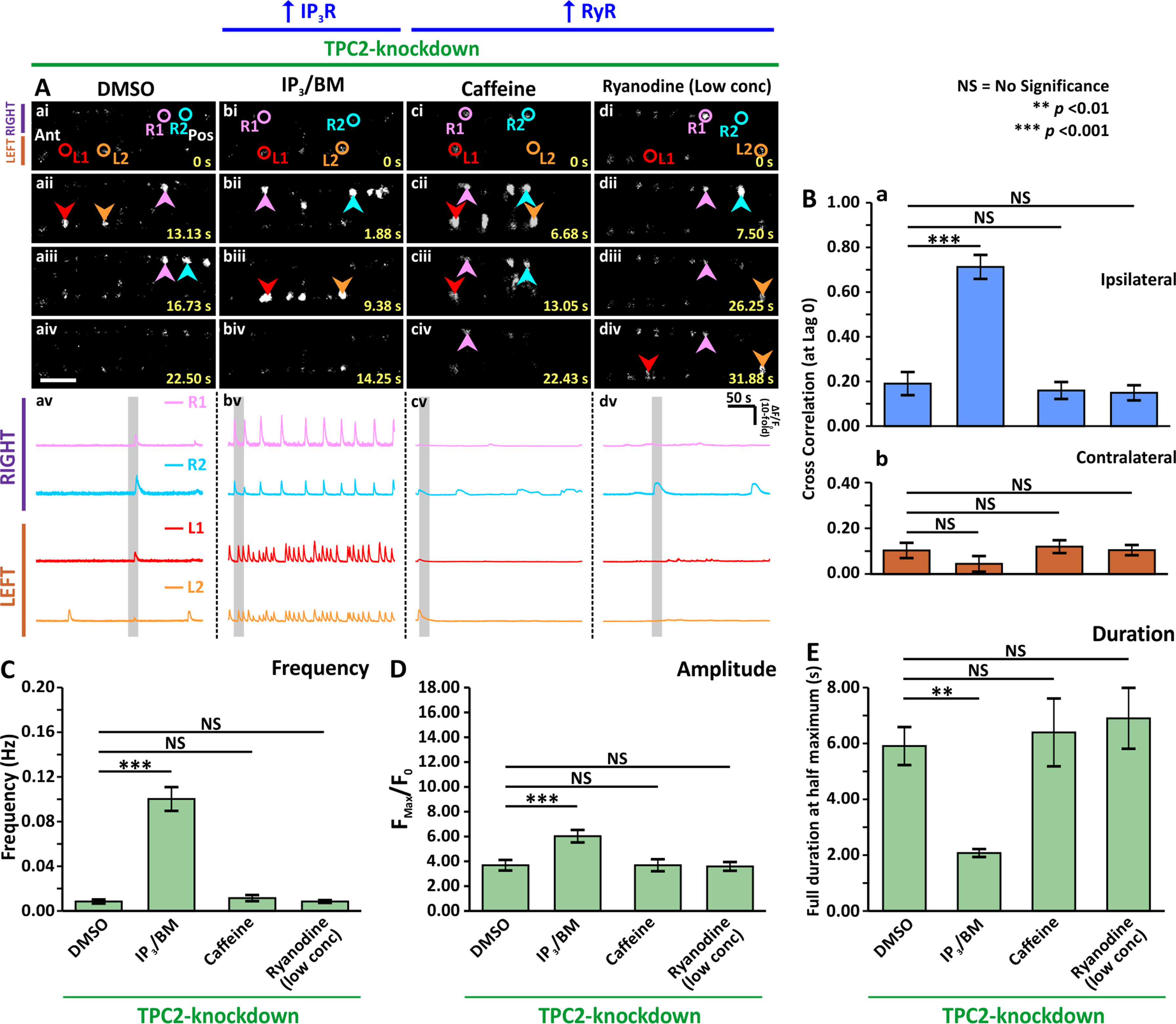Fig. 5
Effect of stimulating the ER-mediated Ca2+ release on the spontaneous Ca2+ activity of the CaPs in SAIGFF213A;UAS:GCaMP7a embryos at ~24 hpf after MO-based TPC2-knockdown. Embryos that had been injected with TPCN2-MO-T at the 1- to 4-cell stage to knockdown TPC2, were treated with: (Aa) 1% DMSO; (Ab) 100 µM IP3/BM; (Ac) 2 mM caffeine; or (Ad) 1 µM ryanodine at ~17 hpf. (Aai-Adiv) Time-lapse fluorescence images, and (Aav-Adv) line graphs as described in Fig. 1. (B) Bar graphs to show the mean± SEM cross correlation function at zero-lag of the (Ba) ipsilateral and (Bb) contralateral CaP Ca2+ activity. (C-E) Bar graphs to show the mean± SEM (C) frequency, (D) amplitude and (E) duration of the Ca2+ spikes in the CaPs of the embryos in the various treatment groups. Data were obtained from n = 30–90 cells from 5 to 10 embryos, except for the duration data, which were n = 6 cells from 3 embryos. p < 0.01 (**), and p < 0.001 (***), and NS indicates no significant difference between the data.
Reprinted from Developmental Biology, 438(1), Kelu, J.J., Webb, S.E., Galione, A., Miller, A.L., TPC2-mediated Ca2+ signaling is required for the establishment of synchronized activity in developing zebrafish primary motor neurons., 57-68, Copyright (2018) with permission from Elsevier. Full text @ Dev. Biol.

